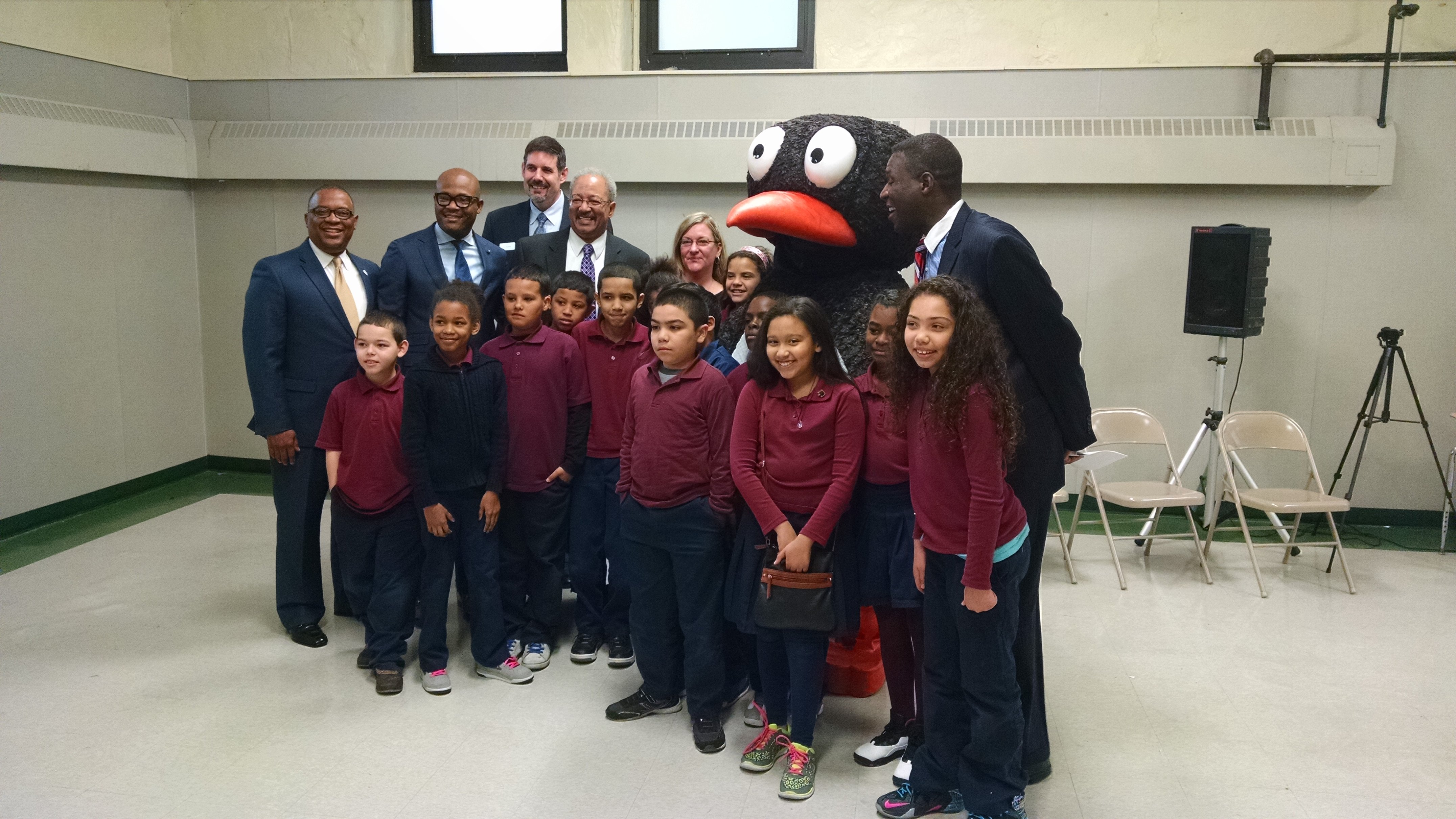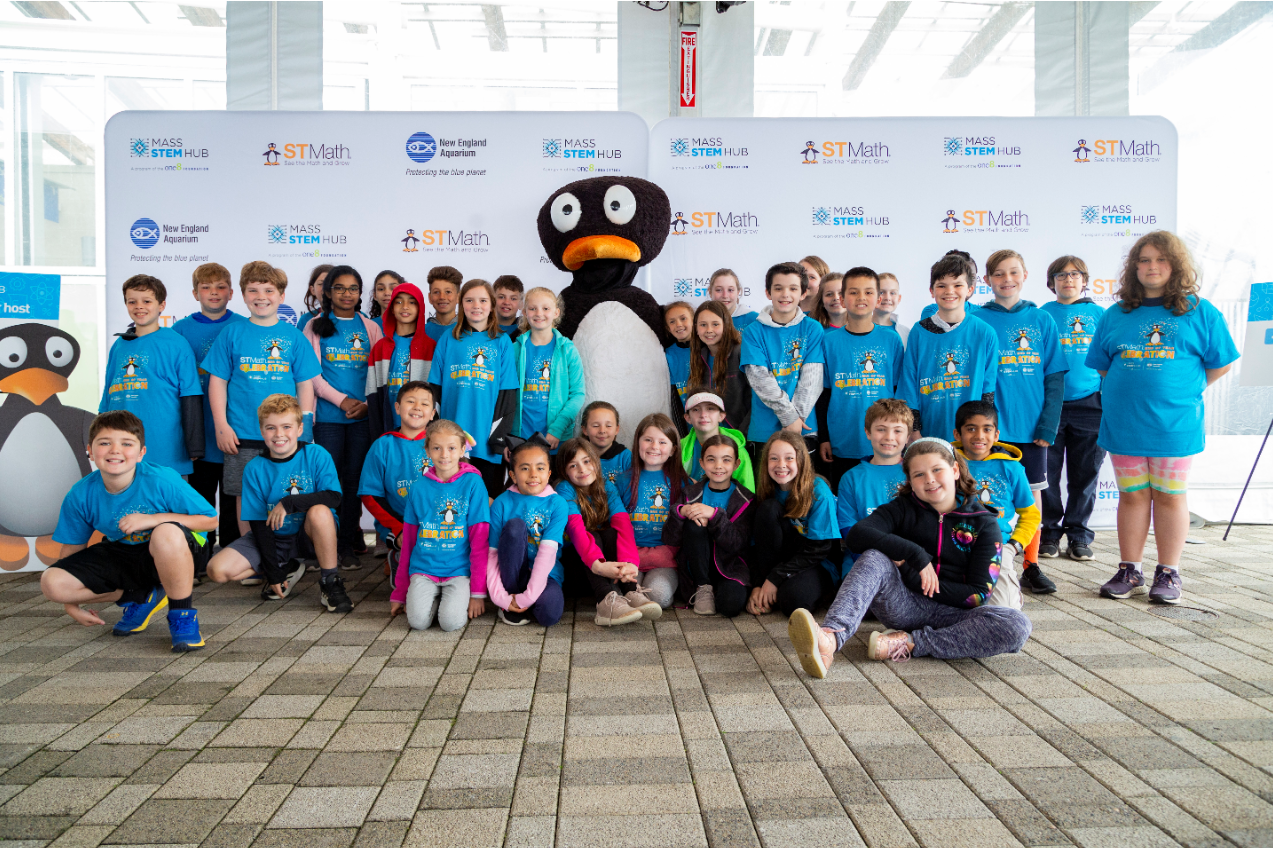Programs
Experience
Services
Educator Topics
Subscribe to the Newsletter
Subscribe to the Blog
Funding for schools can be divided into three primary types: federal funds, state or local funds, and private or foundation funds. Schools and districts have successfully used all different types of funding to bring the patented ST Math approach to students across the country.

Federal funding is made available through formula funds and competitive funds.
Formula funds - also called allocated amounts or block grants - are distributed based on a predetermined formula, such as the number of low socio-economic status (SES) students at a given school or district.
Competitive funds - or discretionary grants - are awarded to eligible schools, districts, or other entities who apply by responding to an RFP, or request for proposal. The RFP response must describe in detail the need and purpose for using the funds based on the specifics of the application.
ESSER funds - funding opportunities are still available for ST Math. These include portions of the American Rescue Plan as well as flexibilities that allow schools or districts to repurpose existing funding. ESSER III funds expire on September 30, 2024.
The American Rescue Plan Act (ARPA) was passed by Congress March 10, 2021. It included $122 billion allocated to K-12. ESSER III funds were awarded to states in the same proportion as each state received funds under Part A of Title I, and states were required to distribute at least 90% of those funds to LEAs, or districts. The goal was to help schools address the challenges posed by the pandemic on students, providing them safe and supportive environments to address learning loss.
If your district has unspent ESSER III funds, they must be spent or obligated by September 30, 2024. After then, you have another four months—or until Jan. 28, 2025—to spend down ARP money.
Why choose ST Math for your ESSER III funds?
Use ST Math to accelerate learning and for expanded learning!
The design of ST Math, with its highly accessible entry points, ensures that students taste some early success. As they advance through the learning progression, they face increasingly challenging problems, which require more effort and, inevitably, some experience of learning from their mistakes. As students develop not just the schemas, but the mindsets to persevere in math, they will continue to make progress not only in math proficiency on standardized tests but in their ability to apply mathematical concepts to real-world challenges. Students who are currently performing below grade level are not the only ones who benefit when you leverage ST Math. Accelerating feedback, accentuating schemas over skills, and giving students grade-level content is effective for all students.
Use ST Math for in-person, virtual, or hybrid learning during the school day OR before or after school, during summer school, or in intersession to empower students to become powerful mathematical problem solvers.
Individuals with Disabilities Act (IDEA) funds are used provide education in the “least restrictive environment” for children with disabilities. IDEA 611 funds support school-aged children ages 5 to 21. It requires school districts to provide accessible versions of instructional materials to students who are unable to use standard-format materials.
ST Math’s innovative approach to learning focuses on eliminating inequities to empower the full brilliance of all students and elevate math education for all students. The neuroscientists who spun MIND out of the University of California over 20 years ago, and patented a new approach to learning, identified how to apply several key principles that help almost any learner.
ST Math may be eligible for purchase with IDEA funds with its innovative, adaptive hands-on learning approach that can be tailored for students with special needs.
Why choose ST Math for your IDEA funds?
ST Math was created by MIND’s co-founder neuroscientist, who experienced a learning challenge due to dyslexia and struggled with not only reading, but also math because of the heavy use of words and symbols in traditional math education. That personal experience inspired Matthew Peterson, Ph.D., to not only study how the human brain learns, but to go on and create a math program specifically designed to better align with how humans learn. As with ELs, students in special education really benefit from ST Math’s visual approach, where they can direct all of their cognitive efforts to solving the problem at hand. ST Math also has an intentionally simple design with no distractions and that keeps the focus on the learning.
Education for Homeless Children and Youth (EHCY) funds are used to provide grants to facilitate and enhance the identification, enrollment, attendance, and success in school for homeless children and youth.
ST Math may be eligible for purchase with McKinney-Vento funds if it is deemed an appropriate and effective tool for providing academic support and addressing the educational needs of homeless students.
Title I provides financial assistance through State Education Agencies (SEAs) to Local Education Agencies (LEAs) and public schools with high numbers or percentages of low-income families to help ensure that all children meet challenging state academic content and student academic achievement standards.
Funds may be used for:
Why choose ST Math for your Title I funds?
ST Math's visual approach makes the program accessible to all learners. When students of all levels - whether English learners (ELs), special education, gifted, or economically disadvantaged - can problem solve without distractions, educators see dramatic increases in achievement.
"ST Math removes the language barrier and provides access to standards-aligned content. The program replaces intimidating word problems with visual word problems that cover the same standards and students are more inclined to persevere, building their stamina in problem solving." —Dr. Kalim Rayburn, Principal, Rea Elementary, Calif.
Migrant education funds support high quality education programs that meet the special needs of migratory children to help them succeed academically in a regular school program, meet the same academic and content standards that all children are expected to meet, and graduate from high school.
ST Math can help migrant students develop a deep understanding of mathematical concepts by representing abstract ideas in concrete, intuitive ways. Because ST Math utilizes visual instruction, it is accessible to students with varying levels of English proficiency. ST Math provides opportunities for contextualized language learning—ELs can develop their English language skills as they engage with the math content.
Title II, Part A is intended to increase student academic achievement consistent with challenging State academic standards, improve the quality and effectiveness of educators, increase the number of educators who are effective in improving student academic achievement in schools, and provide low-income and minority students greater access to effective educators.
Why choose ST Math for your Title II funds?
MIND Education - creators of ST Math - empowers teachers with professional learning to build a greater understanding of how students learn, develop their math content knowledge, employ strategies that impact student learning. A variety of professional learning offerings - including both online and in-person training and support - help teachers and administrators to deepen their math pedagogy and effectively use the ST Math program.
Title III supports programs and initiatives including:
ST Math may be an allowable expenditure as it meets the following tenets of Title IV-A:
Title IV, Part B supports the creation of community learning centers that provide academic enrichment programs, during non-school hours. Districts and community organizations, including faith-based organizations, may run the programs.
ST Math may be an eligible expenditure under Title IV, Part B to improve the math learning of participating students.
The 21st Century Community Learning Centers (21st CCLC) program primarily focuses on providing academic enrichment, tutoring, homework help, and other support services to students during non-school hours, particularly in high-poverty or low-performing schools.
ST Math may be purchased to provide academic enrichment and supporting student learning in mathematics as it meets the goals of the 21st CCLC program:
The purpose of the Rural and Low-Income School (RLIS) grant program is to provide rural districts with financial assistance for initiatives aimed at improving student achievement.
LEAs that receive RLIS grants may use program funds to conduct activities under selected ESEA programs, including the programs below, for which ST Math is an eligible expenditure:
The Small, Rural School Achievement program provides rural LEAs with small enrollments with additional formula funds. (An LEA may not receive both RLIS funds and SRSA funds)
Recipients may use REAP grants to conduct activities under selected ESEA programs, including the following programs for which ST Math is an eligible expenditure:
Impact Aid provides formula and competitive grants directly to eligible school districts serving federally connected children on military bases, Indian lands, and subsidized housing. Special additional payments made to LEAs related to enrollments of federally connected children with disabilities must be used for programs and projects designed to meet the special educational and related needs of these children.
An LEA may use Impact aid funds to pay for a supplementary mathematics curriculum, such as ST Math.
________________________________
To increase understanding and expertise in fostering support of multi-language development when teaching mathematics. The proposed project must explicitly support the implementation of equitable and rigorous mathematics teaching that incorporates students' languages and cultures in their learning of mathematics.
To encourage the innovative use of technology and other tools to "help teachers and students visualize and concretize mathematics abstractions..." (Principles to Actions). When used appropriately, they can enhance other effective teaching and promote meaningful learning opportunities for students. The focus of the proposal should be on the mathematics being taught and innovative uses of the tools and technology.
This NSF competitive funding opportunity seeks to significantly enhance the learning and teaching of science, technology, engineering, mathematics and computer science (STEM) by preK-12 students and teachers, through research and development of STEM education innovations and approaches. Projects in the DRK-12 program build on fundamental research in STEM education and prior research and development efforts that provide theoretical and empirical justification for proposed projects. Projects should result in research-informed and field-tested outcomes and products that inform teaching and learning.
AISL seeks to advance new approaches to and evidence-based understanding of the design and development of STEM learning opportunities for the public in informal environments; provide multiple pathways for broadening access to and engagement in STEM learning experiences; advance innovative research on and assessment of STEM learning in informal environments; and engage the public of all ages in learning STEM in informal environments.
ITEST supports projects that engage students in technology-rich experiences that: (1) increase awareness of and interest in STEM and ICT occupations; (2) motivate students to pursue appropriate education pathways to those occupations; and (3) develop STEM-specific disciplinary content knowledge and practices that promote critical thinking, reasoning, and communication skills needed for entering the STEM and ICT workforce of the future.
STEM+C supports research on how students learn to think computationally to solve interdisciplinary problems in science and mathematics. The program supports research and development that builds on evidence-based teacher preparation or professional development activities that enable teachers to provide excellent instruction on the integration of computation and STEM disciplines. Proposals should describe projects that are grounded in prior evidence and theory, are innovative or potentially transformative, and that will generate and build knowledge about the integration of computing and one or more STEM disciplines at the preK-12 level.
Migrant education funds support high quality education programs that meet the special needs of migratory children to help them succeed academically in a regular school program, meet the same academic and content standards that all children are expected to meet, and graduate from high school.
ST Math can help migrant students develop a deep understanding of mathematical concepts by representing abstract ideas in concrete, intuitive ways. Because ST Math utilizes visual instruction, it is accessible to students with varying levels of English proficiency. ST Math provides opportunities for contextualized language learning—ELs can develop their English language skills as they engage with the math content.
The purpose of the Rural and Low-Income School (RLIS) grant program is to provide rural districts with financial assistance for initiatives aimed at improving student achievement.
LEAs that receive RLIS grants may use program funds to conduct activities under selected ESEA programs, including the programs below, for which ST Math is an eligible expenditure:
The Small, Rural School Achievement program provides rural LEAs with small enrollments with additional formula funds. (An LEA may not receive both RLIS funds and SRSA funds)
Recipients may use REAP grants to conduct activities under selected ESEA programs, including the following programs for which ST Math is an eligible expenditure:
Education for Homeless Children and Youth (EHCY) funds are used to provide grants to facilitate and enhance the identification, enrollment, attendance, and success in school for homeless children and youth.
ST Math may be eligible for purchase with McKinney-Vento funds if it is deemed an appropriate and effective tool for providing academic support and addressing the educational needs of homeless students.
Impact Aid provides formula and competitive grants directly to eligible school districts serving federally connected children on military bases, Indian lands, and subsidized housing. Special additional payments made to LEAs related to enrollments of federally connected children with disabilities must be used for programs and projects designed to meet the special educational and related needs of these children.
An LEA may use Impact aid funds to pay for a supplementary mathematics curriculum, such as ST Math.
Title III ensures language instruction for limited English proficient and immigrant students.
In traditional math education, ELs can miss out on crucial opportunities to understand the meaning behind the math. Because so much of traditional math materials are word-heavy, there are language hurdles EL students must overcome before they can even begin to focus on math concepts. With the ST Math visual instructional program, language barriers are removed, giving ELs access to the same level of math rigor as other students.
The headline and subheader tells us what you're offering, and the form header closes the deal. Over here you can explain why your offer is so great it's worth filling out a form for.
Remember:
Our dedicated philanthropic partners have joined our mission to mathematically equip all students to solve the world's most challenging problems.
The ST Math School Grants Program supports our education partners to help cover the program's cost. Funds are now available for select districts nationwide to help underwrite ST Math program implementation. Please complete the form below for more information and to see if your district qualifies.


A significant amount of education funding is provided at the state and local level through income tax, sales tax, and more. State funding initiatives that approve ST Math include but are not limited to:
